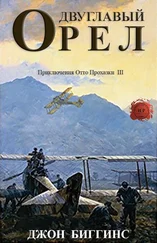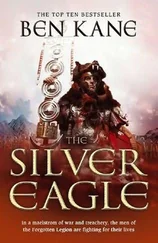My attention was not entirely devoted to working the camera lever every five seconds: in fact ever since we had left Caprovizza I had been ceaselessly scanning the sky above and astern of us for the first sight of anything suspicious. I must say that I was somewhat apprehensive about this. Being a naval officer my eyesight was excellent; but I suspected that the skills of a good U-Boat look-out—like the trick of never looking directly at the horizon but always slightly above it—might not be entirely applicable in the air. I had also, I must admit, something well short of total confidence in the means by which I was to defend us if we were attacked from behind.
The 8mm Schwarzlose had been the Austro-Hungarian Army’s standard machine gun since 1906 or thereabouts, selected after an exhaustive series of competitive trials in which it alone had been able to meet the War Ministry’s stringent specification as regards price. I suppose that the thing might have been just about adequate for a peacetime army, but for fighting a world war it was a very dubious contraption indeed. Whereas most other machine guns in service around the world were operated by muzzle-gas, Herr Schwarzlose had chosen to make his design work by recoil—and had then (for some quite unaccountable reason) decided to dispense with the locking system generally considered necessary to hold a machine gun breech shut while each round is fired. These twin eccentricities meant that the Schwarzlose had to have a very short barrel—and thus mediocre range and accuracy, not to mention a picturesque gout of flame as each round left the muzzle.
It also necessitated a massive breech block, like a miniature blacksmith’s anvil, so that its inertia would prevent it from being blown back into the gunner’s face. This in its turn meant a further loss of range, because so much of the energy from each shot was absorbed in kicking the breech open. As a result its rate of fire was poor: about four hundred shots per minute on paper but barely three-quarters of that in practice.
And that was just the army version: the air Schwarzlose, which now rested behind me on its rails ready for action, was a still further declension of mediocrity. Unlike the excellent Parabellum—standard observer’s gun in the German two-seaters—it had no shoulder-stock to allow the gunner to keep his aim however violently the pilot was throwing the aeroplane about the sky. Instead it had a pair of handles like those of a child’s toy scooter. The water-jacket had been removed to save weight; but this had only made the aim even more uncertain since it abolished the foresight, and also meant that we could fire bursts of only twelve or so shots at a time, for fear of burning the barrel. As for the ammunition feed, it consisted of a canvas belt of five hundred rounds coiled in a metal drum on the side of the thing. This belt would always absorb some damp in the early mornings, waiting out on the airfields, and even in summer this would often freeze in the upper air, causing the gun to jam. This was bad enough, but our gun that morning was an early model—pensioned off no doubt from the Army—in which each cartridge had to be lubricated by a little oil-pump as it went into the breech so that the empty case would extract afterwards. This oil would become sticky in the cold, so that even if the gun would still fire it would slow down to two hundred rounds or so per minute, making it sound like an exhausted woodpecker on a hot summer’s afternoon. All things considered, I think that a Singer sewing machine would have been about as much use for defending ourselves—as well as being a good deal lighter.
In the event though it looked as if the wretched Schwarzlose might not be needed that morning, there in the summer sky above the Friulian Plain. I pulled the lever to expose plate number thirty, heard it clack into the box and then turned thankfully to Toth to tap him on the shoulder and signal “Finished—head for home.” I was glad of this, because cloud was coming in fast from the west: white cauliflowers of cumulus which were for the moment above us, but which seemed to be coming down to our altitude. I looked up and saw Schraffl’s aeroplane disappear into the cloud above us, reappear for a moment and then vanish again as we turned for home. He had seen us I was sure, but to make certain that he knew we were finished I fired a white flare just before we lost sight of one another.
When I next caught sight of an aeroplane, about three kilometres astern and slightly above us, it took me some moments to realise that I was not looking at Schraffl and Jahudka’s machine. I could not see exactly what it was, but head-on it was most certainly not a Brandenburger, whose inward-sloping struts gave it an unmistakable appearance when viewed from the front. It was a biplane, but of what kind I could not say except that it appeared to be somewhat smaller than ours—though still too large for a Nieuport—and that it was most certainly closing with us at speed. Then I saw another one, at the same altitude but about two kilometres astern of the first. Whoever they were, they had seen us and were gaining on us fast. Heart pounding, I turned around and seized Toth by the shoulder. He looked around to where I was pointing, and nodded casually. I signalled for “Full throttle” by thrusting my fist forward. He nodded, and eased the throttle lever forward a little. Meanwhile I had turned to fumble desperately with the machine gun, releasing the clamp which held it still on its mounting-rails and jerking back the cocking lever. Damn them, where were Schraffl and Jahudka? They were supposed to be escorting us and ought to be manoeuvring now to drop down on the Italians as they came in astern of us. And why were we moving so slowly? Surely a Brandenburger could travel faster than this at full throttle.
The leading aeroplane was close enough behind us now for me to get a good look at it. It was most definitely an Italian two-seater. Of what make though I have no idea at all, except that it had a rotary engine and a gun mounted on the top wing to fire over the propeller. They were still out of range, but weaving about slightly in our wake in an effort (I suppose) to confuse us before they moved in for the kill. The Italian was smaller and evidently rather more manoeuvrable than our Zoska, and also looked as if it might be slightly faster. Although I had no way of knowing it at the time, he was about to use what would become the standard technique for shooting down a reconnaissance two-seater. He would make a series of feints like a boxer to put me off my aim, then drop down into the blind spot under our tail until Toth had banked away—say to starboard—to let me take aim. Then he would dodge away to port before I could fire, and use his higher speed and tighter turning circle to come up on the other side as I was desperately trying to lug the gun around on its rails. There would then follow a short burst fired at perhaps twenty metres’ range into the belly of our aeroplane; a burst which, even if it were not to kill the pair of us, would certainly knock out the engine, or hack out a wingroot, or rip open the fuel tank to send petrol pouring over hot engine and sparking magneto and send us spinning down in flames to our deaths.
In the event though, both the Italian pilot and I had reckoned without Zugsfuhrer Toth. He banked us a little to starboard as expected. I caught a glimpse of the Italian machine—a mottled greenish-buff colour I remember—under our tail and was just about to loose off a few shots at him when he disappeared back under it. In panic I turned to Toth—and felt my stomach and liver hit the top of my skull as Toth suddenly gave full throttle and dropped into a power dive. Then I was squeezed to the floor as the whole airframe squealed in protest about me: Toth had wrenched the control column back to take us up in a tight loop! I was not strapped in of course: the observer’s folding seat had shoulder-belts, but to fire the machine gun I had to stand up with nothing but gravity to hold me into the aeroplane. I still shudder to remember the sudden, stark terror of finding myself upside-down, three thousand metres above the meadows and woodlands of Friuli, clutching convulsively at the cockpit coaming as the engine coughed and faltered at the top of the loop. Then, just as I felt sure that I must let go and fall to my death—I was already hanging in mid-air like a gymnast performing a somersault between parallel bars—the nose dipped down as we dived out of the loop. As we did so I saw ahead of us the Italian, taken by surprise, trying to execute the same manoeuvre.
Читать дальше












